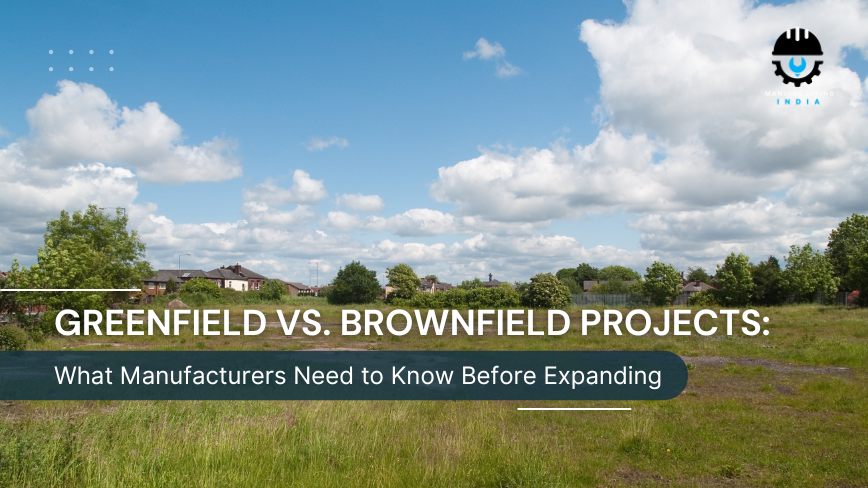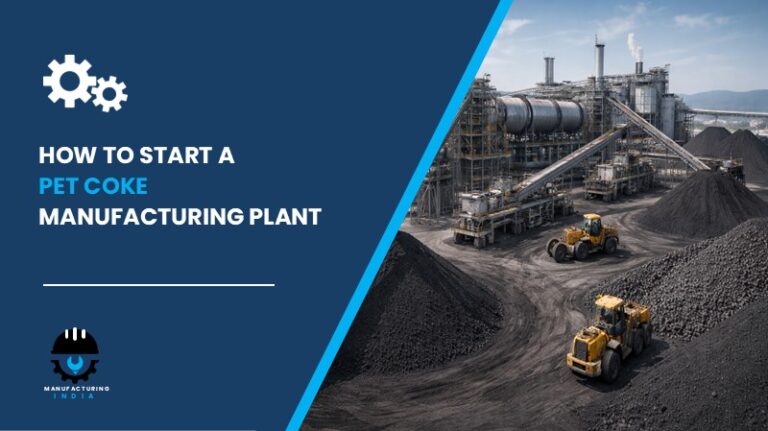
Manufacturing is evolving rapidly, propelled by rising demands for sustainability, technological progress, and operational efficiency. As companies pursue growth or enter new markets, they face a critical decision: whether to develop a Greenfield facility or invest in a Brownfield project. Each option carries distinct advantages and challenges, and understanding these differences is key to aligning short-term objectives with long-term strategy.
This article explains the core features of both approaches, compares their strengths and limitations, and explores how businesses can apply them effectively within the manufacturing sector.
What is a Greenfield Project?
A Greenfield project is one where a brand-new production plant is built from the ground up on newly acquired, newly developed land. The name “greenfield” is an indication of the state of the land, which is usually uncluttered with any past industrial use, enabling firms to plan and install cutting-edge facilities unencumbered by legacy baggage. This allows firms to incorporate current manufacturing technologies, embrace green practices, and install contemporary facility layouts that are optimized for efficiency.
Greenfield projects are most appealing to firms that desire complete control over operations, independence to experiment, and the option to future-proof their plants in anticipation of changing industry standards. That said, they do involve a huge up-front investment and increased time needed for project completion.
Key Features of Greenfield Projects:
- New Construction: Full control over factory design, layout, and workflow, enabling lean manufacturing, automation, and advanced integration from the outset.
- Undeveloped Land: Strategic site selection close to raw materials, logistics hubs, or end markets.
- Innovation Freedom: Ability to install energy-efficient systems, sustainable resource management, and digital monitoring platforms to stay ahead of environmental regulations.
- Custom Scalability: Facilities can be planned for seamless future expansion with minimal operational disruption.
What is a Brownfield Project?
Brownfield projects focus on the redevelopment, renovation, or expansion of existing manufacturing facilities or industrial sites. This can include upgrading obsolete machinery, repurposing old buildings, or extending current infrastructure to support additional production lines. The primary advantage of a Brownfield approach lies in its utilization of existing assets, which often reduces both cost and implementation time.
Brownfield projects are best suited for companies aiming to optimize existing operations, improve efficiency, or quickly scale production without the extensive capital expenditure associated with new construction. While they offer cost and time benefits, they may face limitations due to legacy infrastructure, regulatory constraints, or environmental remediation requirements.
Key Features of Brownfield Projects:
- Existing Infrastructure: Buildings, utilities, and equipment already in place reduce both capital and setup time.
- Redevelopment or Expansion: Facilities can be renovated, retrofitted, or extended to meet modern production needs, with scope for incremental technology upgrades.
- Construction Constraints: Existing layouts and capacity may limit adoption of advanced automation or high-efficiency systems.
- Faster Market Readiness: Shorter permitting processes and pre-zoned land enable quicker operational launch.
Greenfield vs. Brownfield Projects: Key Differences
| Parameter | Greenfield Project | Brownfield Project |
| Land | Constructed on undeveloped or “green” land | Built on land that has been previously used for industrial purposes |
| Construction | Complete new construction, offering total design flexibility | Limited by existing infrastructure; often involves upgrades, expansions, or repurposing old facilities |
| Cost | Higher initial costs due to land acquisition, permits, construction, and setup from scratch | Lower upfront costs due to existing infrastructure; only upgrades and expansions are required |
| Timeline | Longer timeline as it involves land acquisition, construction, and full setup of operations | Shorter timeline as much of the infrastructure and equipment may already be in place |
| Innovation | High level of flexibility for incorporating modern technologies, sustainability features, and design innovations | May face limitations in incorporating modern technologies due to the constraints of existing facilities |
| Regulatory and Permits | Requires new permits and regulatory approvals for construction, environmental impact, and zoning | Typically, fewer new regulatory hurdles as the land have already been zoned for industrial use |
| Risk | Higher risk as there are uncertainties related to land development, construction delays, and new infrastructure | Lower risk as the business is building on existing operations with a known history |
Advantages and Challenges of Greenfield and Brownfield Projects:
| Project | Advantages | Challenges |
| Greenfield Projects | Design Freedom and Flexibility Innovation and Modernization Futureproofing Optimal Location | High Initial Investment Longer Time to Market Regulatory Hurdles |
| Brownfield Projects | Lower Initial Investment Faster Implementation Reduced Regulatory Complexity Proven Track Record Easier Market Access | Limited Flexibility Environmental Concerns Potential for Obsolete Infrastructure |
Strategic Considerations for Choosing Between Greenfield and Brownfield Projects
The decision to pursue a Greenfield or Brownfield approach should be guided by specific business objectives, market conditions, budgetary constraints, and long-term strategic goals.
- Greenfield Projects: Ideal for companies seeking complete operational control, advanced technological integration, and strategic location advantages. They are particularly suitable for firms entering new markets, launching new product lines, or undertaking highly automated production processes. While they require larger upfront investment and longer timelines, the flexibility to design a facility tailored to future growth and sustainability can provide a significant competitive advantage.
- Brownfield Projects: Suitable for businesses looking to optimize existing assets, increase production capacity, or upgrade operations with limited capital outlay. Companies located in established industrial hubs or those aiming for rapid market expansion may find Brownfield projects offer the optimal balance of cost efficiency and speed to market. These projects leverage existing infrastructure, shorten project timelines, and reduce operational risk, though they may limit flexibility for innovation.
- External Factors: Regional industrial policies, availability of skilled labor, environmental regulations, and supply chain dynamics also have a substantial impact on the success of either Greenfield or Brownfield projects.



